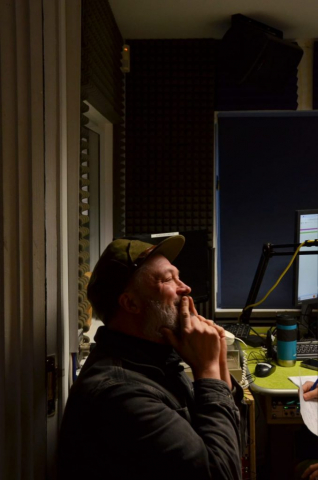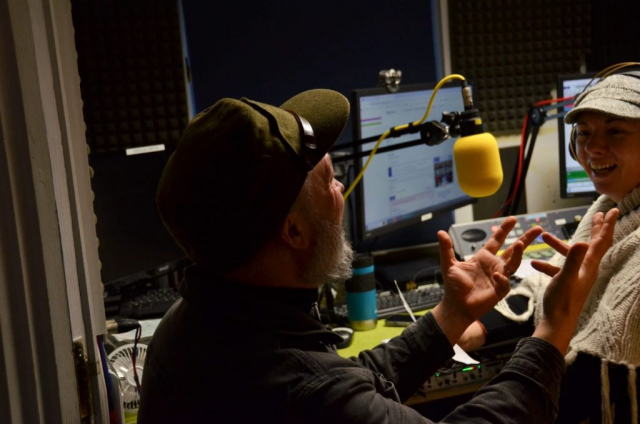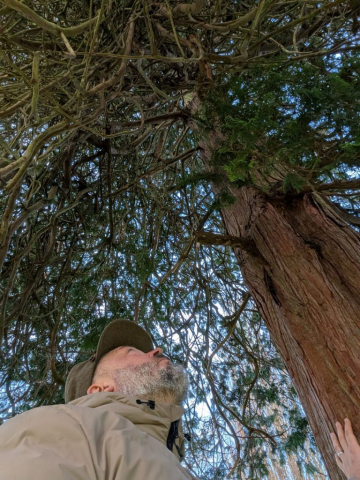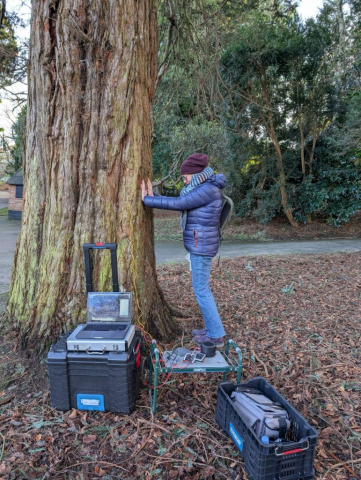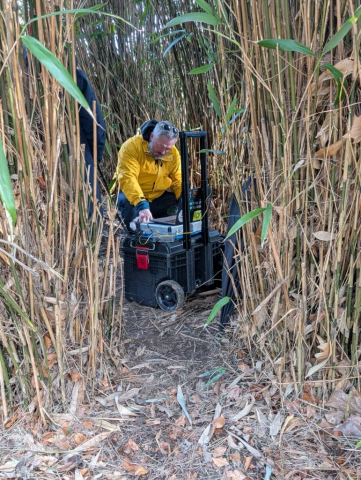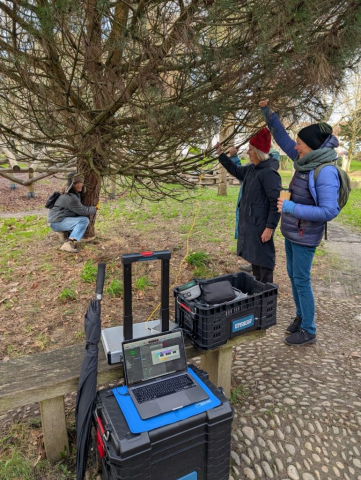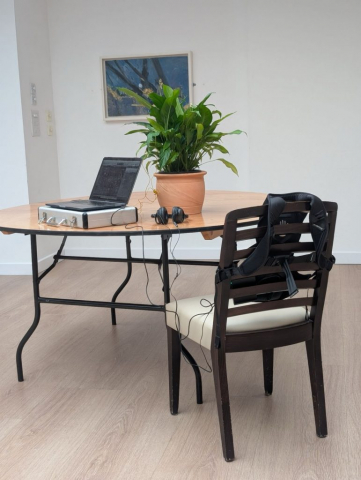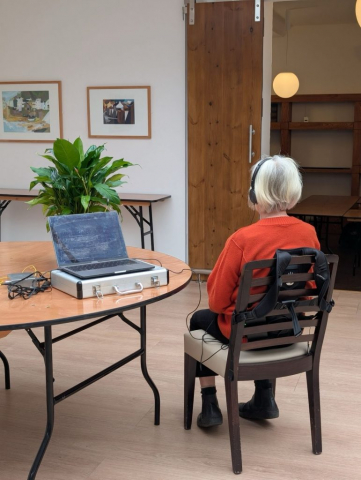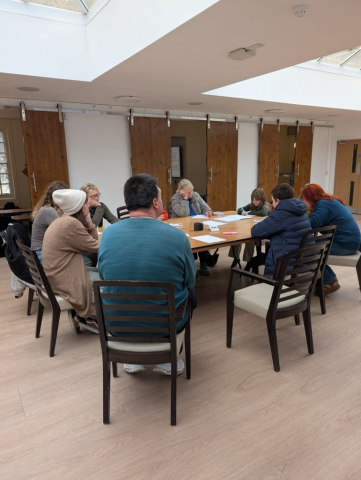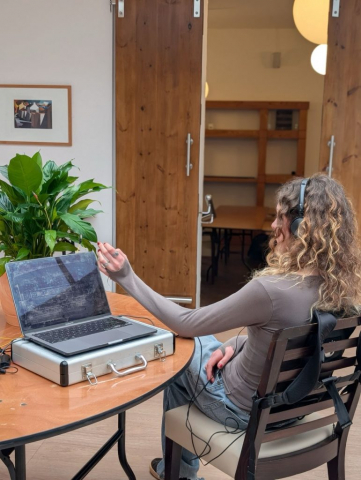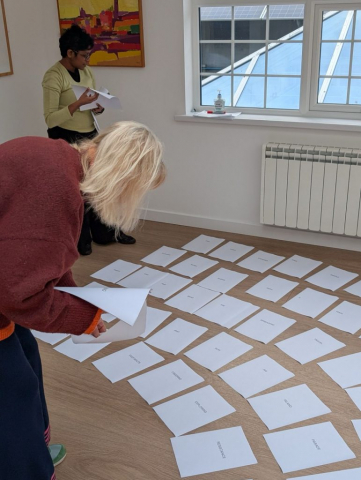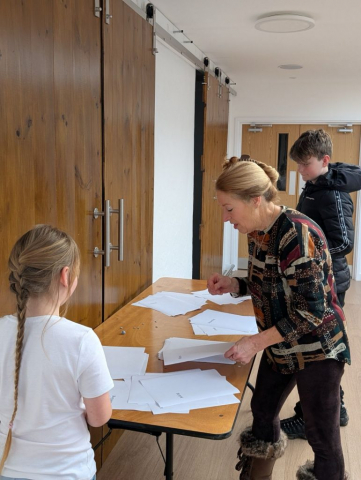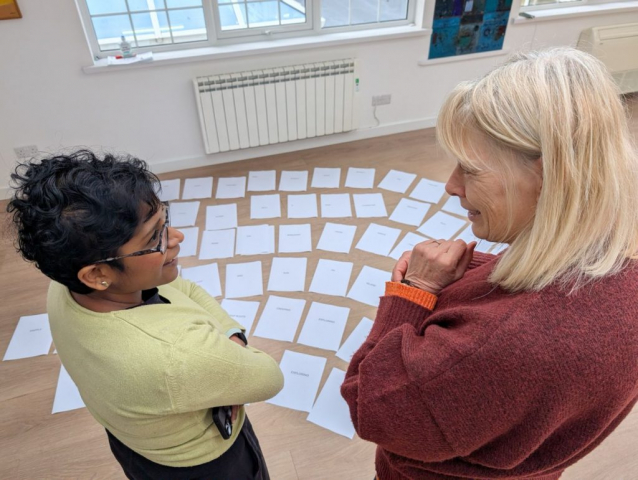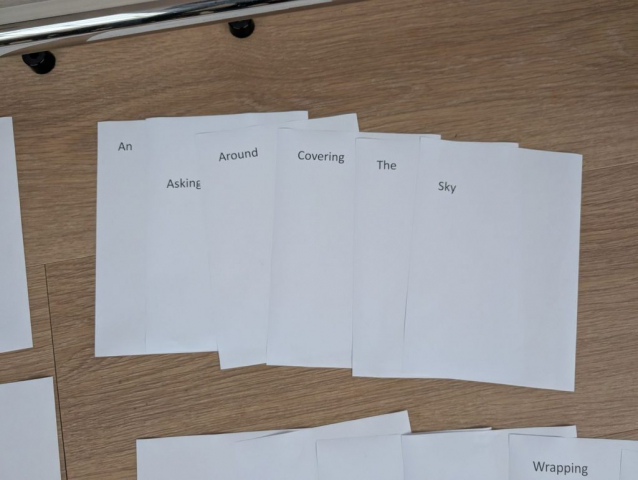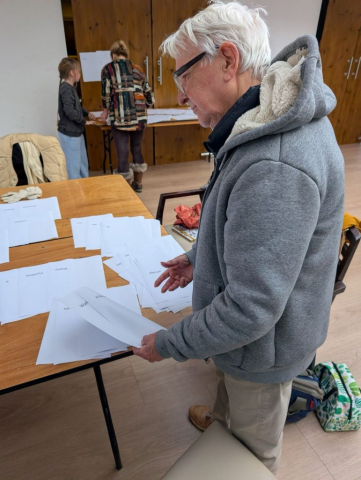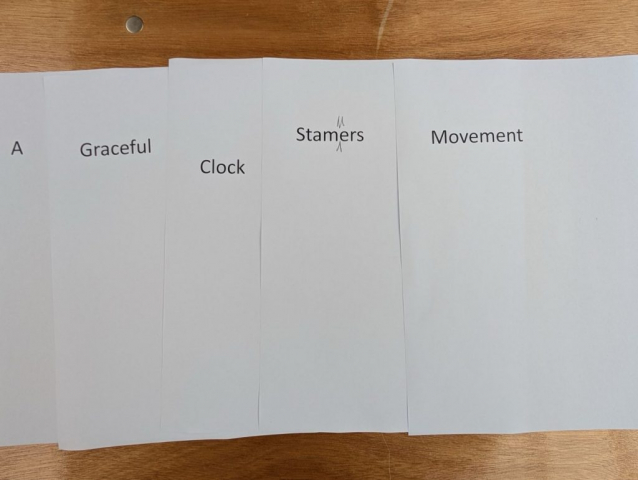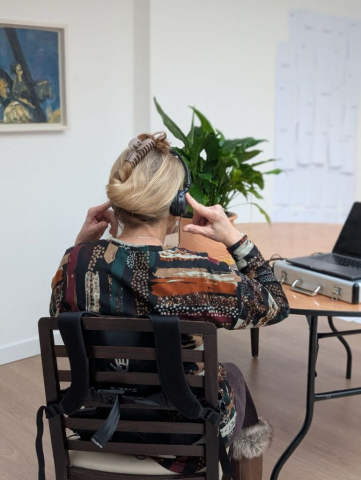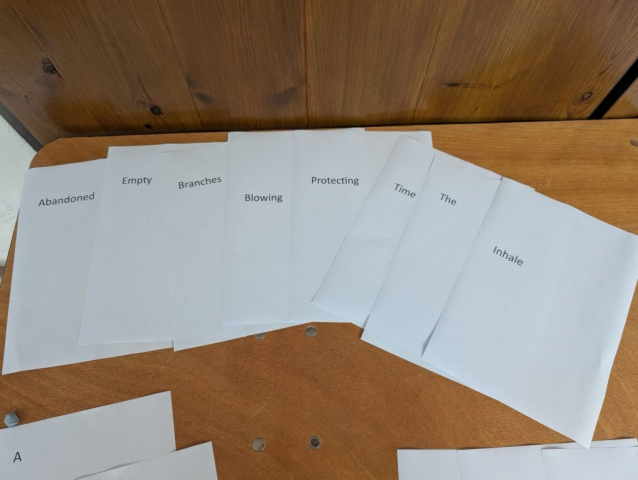⸻
Sownros Derow a’ Park Kimberley.
Created by artist Justin Wiggan
What does a tree sound like? What can it teach us about ourselves, and each other?
Tree Sounds of Kimberley Park is a powerful blend of art, science, nature, and community. Led by sound artist Justin Wiggan, this groundbreaking project reveals the hidden inner worlds of trees—transforming their biological signals into calming, expressive soundscapes that anyone can hear and feel.
Using a method called biosonification, sensors are gently attached to 10 selected trees in Kimberley Park, capturing subtle data such as moisture levels, electrical conductivity, and internal rhythms. These signals are translated into sound using custom technology, giving each tree its own unique “voice.” What emerges is a living composition—real-time music born from the trees themselves.
These soundscapes are shared through interactive QR codes placed beside each tree. As visitors walk through the park, they can scan the codes and listen through their phones—turning a casual stroll into a mindful, immersive experience of connection with the natural world.
⸻
Well-being Through Deep Listening
At the heart of this project is a simple but profound goal: to help people slow down, breathe, and reconnect—with nature, with community, and with themselves.
In today’s busy world, green spaces are more than beautiful—they’re essential. Tree Sounds of Kimberley Park uses the power of sound to deepen that connection, offering moments of peace, reflection, and presence. Listening to the living rhythms of trees encourages mindfulness, reduces stress, and fosters a gentle awareness of the life happening all around us.
The soundscapes serve as a form of natural meditation, allowing listeners to tune into the unseen forces that support all life. It’s an invitation to notice, to wonder, and to simply be.
⸻
Creative Community Involvement
This wasn’t just a project for the community—it was built with the community.
Justin Wiggan hosted a series of “Listen and Learn” outdoor workshops, where local residents were invited to gather under the trees and hear their sound signatures in real time. Participants learned how biosonification works, and how it can open a new way of experiencing the environment. These sessions brought together people of all ages and backgrounds in a shared act of curiosity and calm.
Following the workshops, participants were invited to write haikus—short nature-inspired poems—reflecting on what they heard and how it made them feel. These written responses became part of the final soundscapes, woven into the audio as soft spoken word or subtle sonic textures. In this way, the voices of the community were combined with the voices of the trees—creating a collaborative, multi-sensory expression of place, presence, and emotion.
From school groups to seniors, writers to walkers, Tree Sounds of Kimberley Park became a space where people could express themselves, feel heard, and contribute to something greater than themselves.
⸻
A Celebration of Cornish Culture and Environment
The project title—Sownros Derow a’ Park Kimberley—comes from the Cornish language, meaning “Tree Sounds of Kimberley Park.” By using Kernewek, the project honors Cornwall’s living cultural heritage and deep historical connection to the land.
This emphasis on local identity and environmental awareness supports a wider conversation about how we care for our green spaces, our traditions, and each other.
⸻
A Lasting Impact
Tree Sounds of Kimberley Park lives on beyond the initial experience. The installations remain in place, inviting new visitors to discover the soundscapes and reflect on the hidden vitality of the trees around them. The haikus and audio pieces are preserved as part of a growing archive—a poetic, sonic document of a moment when nature and community came together in harmony.
Ultimately, this project is about listening—truly listening. To trees. To ourselves. To each other.
It’s a reminder that nature is not separate from us. It speaks, and when we take the time to hear it, we heal.
Listen to the Source FM interview with Justin Wiggan

